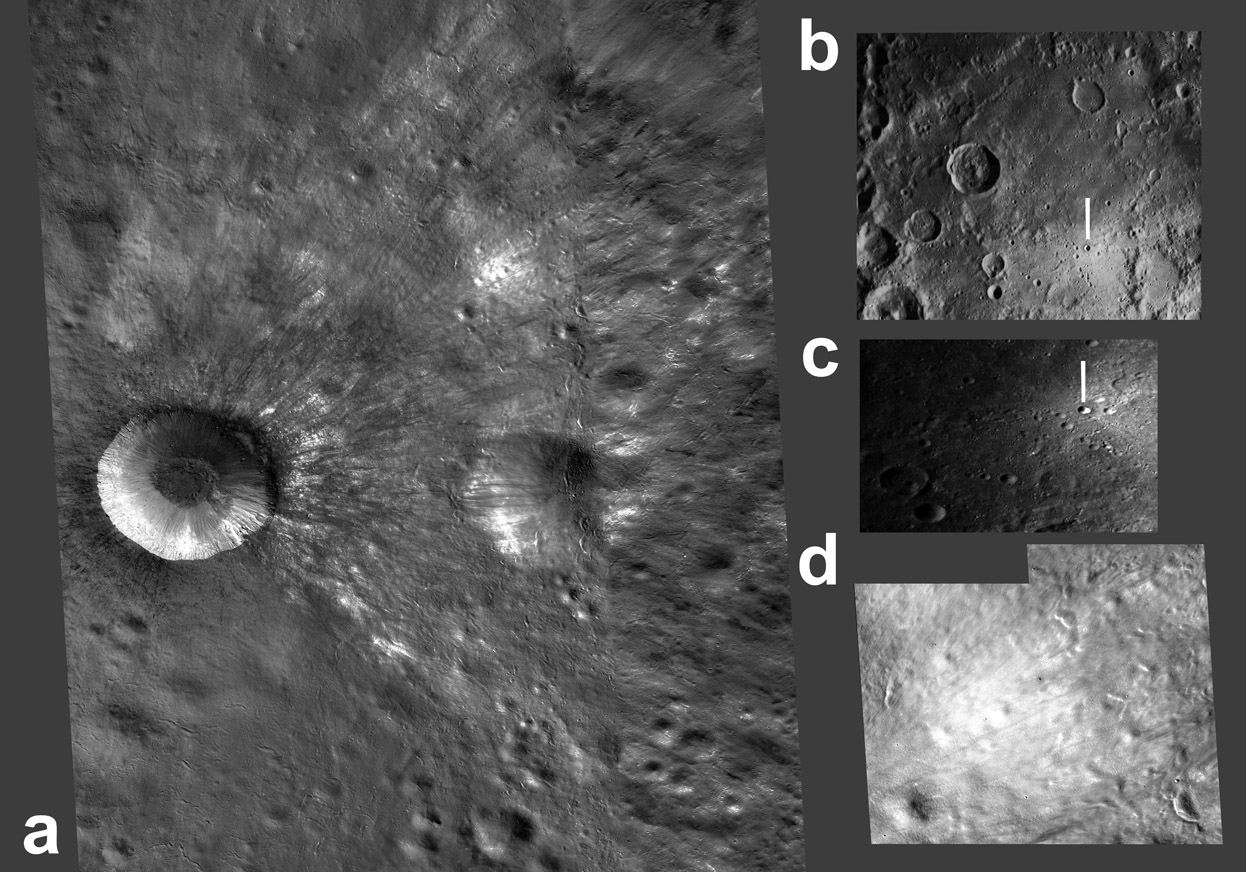Difference between revisions of "November 7, 2012"
(Created page with "__NOTOC__ =A Puff of Brightness= <!-- ws:start:WikiTextHeadingRule:0:<h1> --> <!-- ws:start:WikiTextLocalImageRule:6:<img src="/file/view/LPOD-Nov7-12.jpg/37...") |
|||
| Line 2: | Line 2: | ||
=A Puff of Brightness= | =A Puff of Brightness= | ||
| − | + | <!-- ws:start:WikiTextHeadingRule:0:<h1> --> | |
| − | + | <!-- ws:start:WikiTextLocalImageRule:6:<img src="/file/view/LPOD-Nov7-12.jpg/379889932/LPOD-Nov7-12.jpg" alt="" title="" /> -->[[File:LPOD-Nov7-12.jpg|LPOD-Nov7-12.jpg]]<!-- ws:end:WikiTextLocalImageRule:6 --><br /> | |
<em>mosaic compiled by [mailto:fisherka@csolutions.net Kurt Fisher]; a - 7 LRO NAC images including M126961088RE and LE. b - Lunar Orbiter IV 4112-h3. c - LRO Wide Angle Camera M119889321ME. d - LRO NAC M175307708LE and RE.</em><br /> | <em>mosaic compiled by [mailto:fisherka@csolutions.net Kurt Fisher]; a - 7 LRO NAC images including M126961088RE and LE. b - Lunar Orbiter IV 4112-h3. c - LRO Wide Angle Camera M119889321ME. d - LRO NAC M175307708LE and RE.</em><br /> | ||
<br /> | <br /> | ||
| Line 19: | Line 19: | ||
<br /> | <br /> | ||
<hr /> | <hr /> | ||
| − | |||
| − | |||
| − | |||
| − | |||
Revision as of 23:38, 2 January 2015
A Puff of Brightness

mosaic compiled by Kurt Fisher; a - 7 LRO NAC images including M126961088RE and LE. b - Lunar Orbiter IV 4112-h3. c - LRO Wide Angle Camera M119889321ME. d - LRO NAC M175307708LE and RE.
Cassini's Bright Spot is conspicuous at Full Moon, bright enough to be seen in binoculars. Kurt has honed in on it using Lunar Orbiter as a wide angle context and Lunar Reconaissance Orbiter Narrow Angle Camera for details. The very fresh 3.7 km wide crater Hell Q is the source of the Bright Spot and since most of the brightness is to the east, it appears that Q was formed by a projectile coming from the west. What is remarkable is how strongly concentrated the brightness is in a particular spot to the east, seen in image d. Kurt wonders if Q might have been formed by a comet impact, but we have no way to distinguish between comet and asteroid impacts so can't evaluate that idea. Since ray brightness for young craters is due to pieces of ejecta from the primary crater and from secondary craters along rays. There is little evidence for secondary craters within the bright spot in image d, so the small bright spot may be the result of a single big clump of ejecta from Hell Q.
Chuck Wood
Technical Details
A 48 Mb version of the mosaic is available for the next month here.
NAC and WAC images are provided courtesy of NASA/GSFC/ASU.
Lunar Orbiter IV images are provided courtesy of NASA/Lunar Planetary Institute
Related Links
Rükl plate 65



